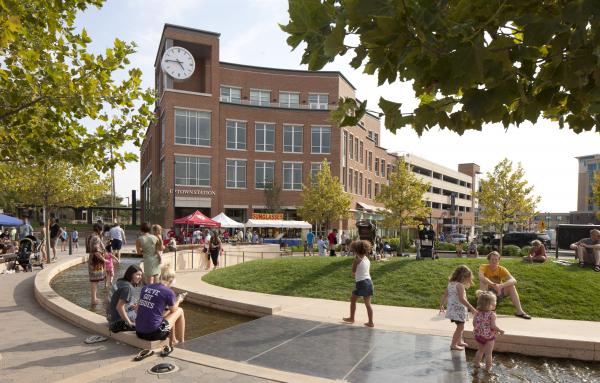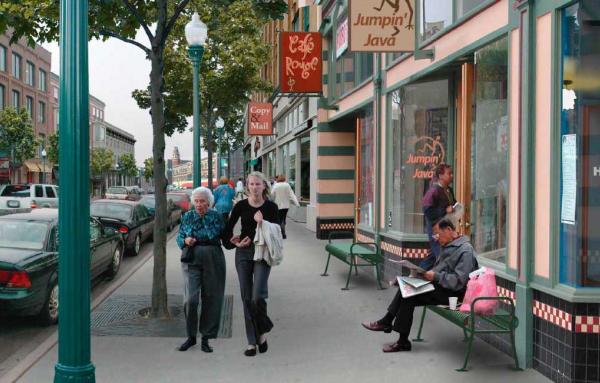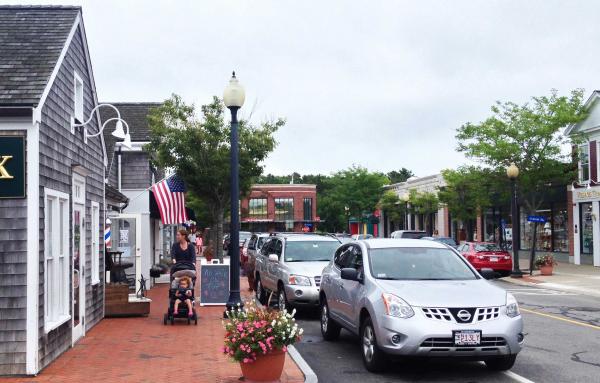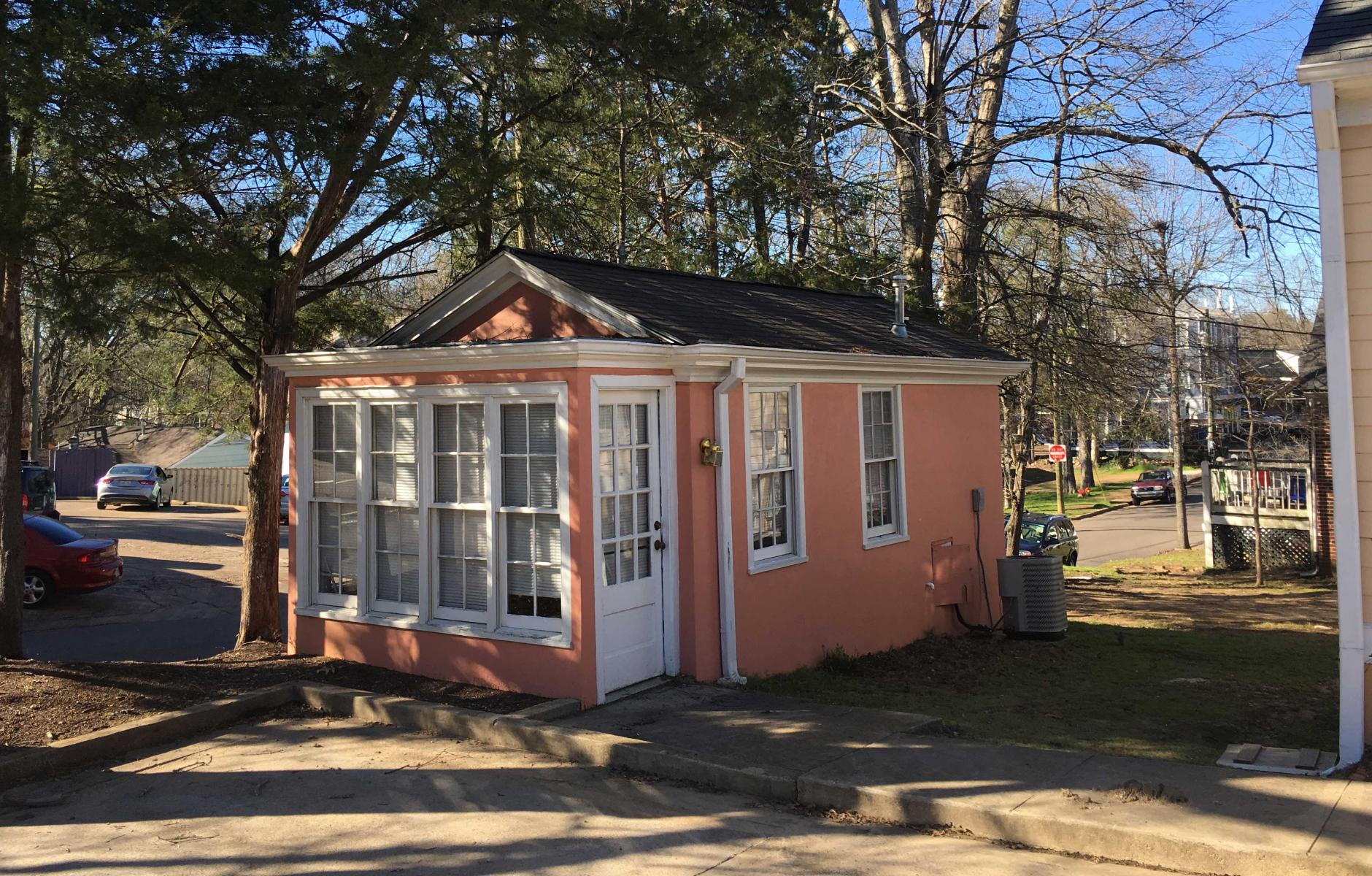
Great idea: Incremental development
In celebration of the upcoming CNU 25.Seattle, Public Square is running the series 25 Great Ideas of the New Urbanism. These ideas have been shaped by new urbanists and continue to influence cities, towns, and suburbs. The series is meant to inspire and challenge those working toward complete communities in the next quarter century.
The incremental development movement grew out of the observation that great places are built in small increments. Savannah and Philadelphia may have benefited from big plans at the start, but no master developer was involved. The sprawling of America grew hand-in-hand with the supersizing of the development industry. While the industry has economies of scale, it does a poor job of creating the kind of holistic neighborhoods in demand today. Small urban developers can succeed by understanding that "the project is the neighborhood"—and even a tiny development can build value and contribute to community. In doing so, small developers can be the craft beer to big developers' Budweiser.
Public Square editor Robert Steuteville interviewed John Anderson, principal of Anderson-Kim Architecture & Urban Design, small developer, and one of the founders of the Incremental Development Alliance, and Eric Kronberg, principal of Kronberg Wall Architecture, a firm that specializes in rebuilding cities and neighborhoods through design and construction, on the subject of incremental development and becoming a small developer.
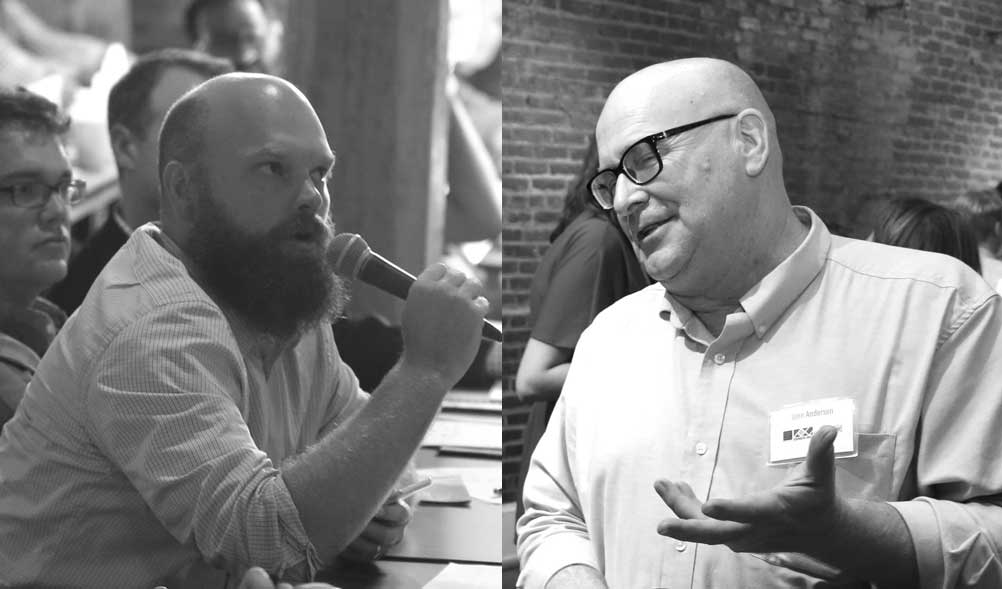
Can you explain the concept of incremental development, and why it’s important for walkable urban places?
Anderson: New urbanists are really good at looking at evidence on the ground and coming up with a pragmatic way to retrofit stuff that doesn't work. We love the places that have been built in small increments, the Brooklyn Heights, Back Bay, Charleston, Savannah, New Orleans. Any great neighborhood, any great part of the city is usually built in small pieces. And when the new urbanists engaged modern development practice, we bought forward the idea that things need to be done with an economy of scale in order to build a version of urbanism that’s a noticeable improvement on big lumpy projects.
Kronberg: I work in urban redevelopment, fixing places that have been beaten down and need help. In this context, incremental development is a much better way to keep people in place. It helps lift up communities with what's there, as opposed to wholesale clearing of a site in order to replace it with a big lumpy project. One of my historic beefs in my younger days of New Urbanism involved infrastructure. If you have to build all the infrastructure from scratch, you have to sell your product at a premium price because it costs so much to build it all. But if you can help provide great urbanism in places where the infrastructure exists, you've got a much better shot at an inclusive community.
Anderson: The incremental development model is based on the idea that we're not interested in reforming large-scale developers. We broke our pick on that hole quite a few times. We're looking at a parallel system that operates outside their realm because we're working on smaller sites. This scale provides a competitive advantage to small local operators because they have a chance to demonstrate good faith with the neighborhoods they work within. They have a chance to learn their lessons, then rinse and repeat. Furthermore, they have a chance to get into the development business at a lower barrier to entry. Outside of incremental development, small developers are completely overwhelmed with the realities of economy of need. They only have so much financial and social capital to work with. But incremental development allows them to complete suburban retrofit or even greenfields better because they don’t need to absorb the large cost of infrastructure in order to be able to do anything.
Kronberg: In New Orleans, Atlanta, and throughout the southeast of the country, there are bunches of 1900s and 1920s neighborhoods. These are the first original suburbs, just outside of main downtown, that have good grid and bones. A lot of them are on the wrong side of the tracks, so to speak, but have great proximity, and can be fixed incrementally. This is one of the few ways to bring the benefits of urbanism to the folks that live there and hopefully limit displacement to a reasonable degree.
Where does the principles of New Urbanism fit into your incremental development? Because we don't need more small builders putting up single-family houses in the exurbs, do we?
Kronberg: We need to build everything except the single-family home. From Missing Middle, to small commercial, even guest houses and ADUs (accessory dwelling units), these are the things people need help with in terms of small-scale development. In the traditional neighborhoods that we deal with, all that stuff's been zoned out or made illegal, so it's a matter of working with zoning and entitlements to legalize again traditional neighborhood development.
Anderson: According to Chris Nelson's big-picture demographics, 75 percent of the market demand over the next 13 years will be for rental units. I like the idea of helping to train, cultivate, and connect small developers who address this market. Developers who build single-family homes don't need help. The ideal candidate to become involved in incremental development is someone that stares at a shuttered muffler shop or a gravel parking lot in their neighborhood and says, "You know, somebody ought to be doing something about this." They recognize they have to do it themselves in their town and in their place and they need to acquire the skills to fix it.
Do you think of this as being analogous to the craft brewing industry? Thirty years ago, we had a handful of brewers in America. It was hard to find a good beer. Now, we have thousands. Is that a model for better development?
Anderson: It’s a direct analogy. In 10 years, I’d like to have 40 percent market share much like craft brewers. With craft brewing there’s an ethos of collaboration. Their common competitors are Miller, Coors, and Budweiser—not each other. They're going after the big guys, and they're doing with a better product. They don’t have to build a lumpy brewery out on the edge of town. They can brew in a former muffler shop.
Our competitor is the developer who builds regrettable multi-family apartment pods of 200 units or more with a pool nobody uses, in a place nobody really wants to live. Commodity apartments in a suburban setting.
Kronberg: In our case, we’re working with neighborhoods with existing infrastructure close to the downtown, to make them more livable for more people. We’re trying to provide more housing close to transit so people can drive less and have a better choice than the apartment building out in suburbia.
Anderson: We have a pretty robust toolkit for folks that are going to work in an existing service lot close to transit. Or for those interested in creating apartments as part of TNDs (traditional neighborhood developments). But for the suburban corridors, that’s a reduced toolkit. The stakes are a lot higher there, because you depend on the public to make investments in roads and transit. But once the in-town sites are picked over, then we can turn our attention to the gnarly, disconnected corridors.
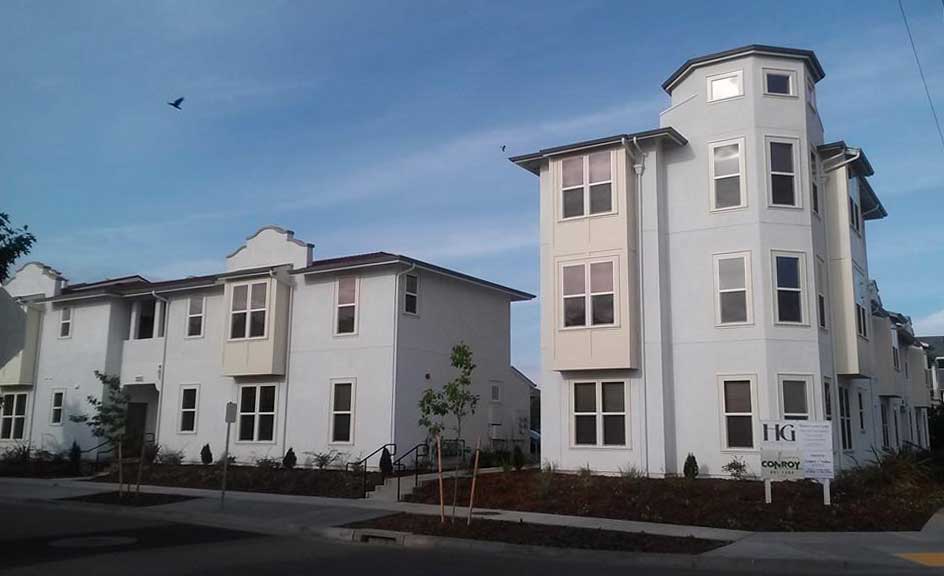
How do you get more small developers in a city or a town?
Anderson: "You show up and ask, "Who wants to be a small developer?" A whole bunch of people gather around, and you pull out your Powerpoint. Initially at our workshops we saw people that came from the CNU membership and from Strong Towns. Now, half the people in any of our workshops are folks that may or may not have heard of New Urbanism or Strong Towns. They identify themselves as somebody who's committed to their city. They're very amenable to the ideas of urbanism that have connected multiple places, and they're looking for the mechanics and tools to be able to make a difference in their neighborhoods.
Kronberg: There's a lot of people that see developers as evil, soul-sucking beings. I try to redefine the term of developer as someone who is invested in a place. As part of this conversation, I ask, "Do you want to own your own building? Are you a small business owner? Do you want to contribute to place? Well, then you're a developer." Unfortunately, due to many negative examples, people need help to understand that property can be developed in a positive way for the neighborhood that adds wealth and value for everyone.
Anderson: "Do you want to be an operator of a large beer refinery, or would you like to be a craft brewer?" "Oh, I want to be a craft brewer, that sounds great."
Besides the fact that the developer is perhaps viewed on the level of a used car salesman in lots of places, a lot of people might be intimidated by the idea of becoming a developer. It sounds like you need a lot of capital, that there's a lot of risk, yet you're saying that a lot of people are interested in doing this. Can you summarize briefly what it takes to be a developer or a small developer.
Anderson: It sounds like you need a lot of capital and that there would be a lot of risk if you don't know what it is. If you don't know what indoor plumbing is and how it works that too might sound like a crazy idea. But it's not that complicated nor that risky. The biggest barrier to entry is the initial step. What is the road map? What is the territory? It's a black box in a lot of people's minds. Now, the idea that developers are held in low-esteem, right now I see that as more of a feature than a bug because if the bar is low, it's pretty easy to underpromise and over-deliver. If people expect a developer coming to their neighborhood to resemble Darth Vader, you just need to be a noticeably less lousy version of Darth Vader.
Why would small developers focus on walkable neighborhoods? What's in it for them to do this kind of development?
Anderson: If you're building a commodity product, then there's really no reason to think about walkable neighborhoods. If you're building a differentiated product, where your risk is being reduced by the pre-existing amenities, then that looks like a really sweet deal.
Kronberg: To me, so much of this comes down to infrastructure and parking. The more connected a place you rebuild or develop in, the less land and resources you need to allocate for parking and the other amenities that you would need in a disconnected suburban location. This increases the chance to turn a profit on your project.
You've got a whole country to operate in. You've got your local community, but if you're a small developer you may have a choice as to go elsewhere. What should small developers be looking for?
Anderson: Go to the place that you care about and figure out the mechanics, as opposed to searching out opportunities from town to town. You should pick a spot and cultivate it, then put the time in and understand what it is because you want to be there, and you care about it.
Kronberg: There are plenty of in-town, walkable neighborhoods that are thriving and fine. Generally speaking, we find those community leaders really don't want change. Those are not the proper fields to cultivate. It's the south-of-the-tracks neighborhoods that need investment and that need help. They also have opportunity in an existing building stock that needs to be repaired. They have vacant lots that need new construction infill.
But don't you also need codes that are going to enable you to do what you want to do and infrastructure that's going to support you in bringing a neighborhood back?
Anderson: Before rewriting the code, you need to place projects within the pre-existing code. You figure out how to hack the code to make some decent projects happen. Then you have some decent projects under your belt. Now you can talk to them about making adjustments to the code. But make the projects happen first. Don't wait for the code to presage or somehow design the town for you. Make the projects happen, build a reputation, and then get the codes modified in whatever minor ways you need, rather than wait until the code is rewritten in ways you don't fully understand yet, particularly with regards to the consequences for development and growth.
Kronberg: A lot of the adaptive reuse work we do has taught us that the notion of an existing nonconformity is a precious thing to treasure and cultivate. And so we help clients identify those buildings that have vested rights to do the right thing in the right place that the code defines as illegal. Understanding how to work around and beyond the codes is part of what we do.
In an ideal situation, do you go into a place that has potential, but not everybody has seen that potential? The expectations are fairly low. Maybe the zoning has not been reformed. Maybe there hasn't been a lot of infrastructure installed, but you start there and within five years all the good stuff has happened and they've changed the codes and they've helped with the infrastructure, but you've already built some stuff and helped to make that come about.
Anderson: The key is not to think about the individual building as the project. The project is the neighborhood and the increment of the building is how you're going to make the neighborhood more stable, more economically productive, and how you're going to put money into your overall portfolio.
Kronberg: Infrastructure can be a relatively low bar, like a neighborhood with proper, smaller blocks, decent sidewalks, and some on-street parking. We're not necessarily talking about a highly-developed transit system.
Anderson: Good enough for now, room to improve it later. The idea is that the increment you need to support is pretty modest. If you can get the rent, then you have a shot at building the building. If you can cultivate a tenant that adds to the neighborhood, somebody that's serving beer or coffee or runs a daycare, then the buildings that you built two or three years ago in the same neighborhood are more stable and more valuable. But we like to look for places with reasonable infrastructure. They're what we call NRC zones. NRC stands for nobody really cares. It’s a safe place to go through your learning curve on your first small project to demonstrate that you're somebody who does what they say they're going to do, which is a rare quality these days. If you build a second building, then you demonstrate that it wasn't a fluke.
Kronberg. If you do that twice, holy crap.
Anderson: That’s an amazing thing. You’ve done all of the great projects on Elm Street. All two of them.
We have a history of small-scale development in the United States. Why did development get so big? What role does finance play? What role do codes play?
Anderson: The development model we as a society have built is more like strip mining than gardening. You take the money from the place where you've built what’s supposedly urban fabric and you send that money somewhere else, as opposed to recirculating that money within the community. We need to be able to consider the increment of opportunity for the entrepreneur. What is the increment of opportunity for somebody who's going to own a modest little fourplex and live in one unit rent-free?
Kronberg: The role of finance is huge and drives so many decisions. But it's also just part of the statutory ecosystem of regulations that drives so much big development.
Anderson: Consider what happens between four units and five units. A four-unit building is a residential mortgage, similar to that for a single family house. It's completely different from five units. Five units is a commercial loan with a commercial appraisal. It's more complicated. There’s an idea that a building goes through some kind of construction puberty between four and five units, and so the financing changes.
Kronberg: A lot of zoning categories will treat a fourplex as true multi-family. From a rezoning standpoint, you might as well try to deal with 40-plex. But a lot of places may allow for duplexes and a guest house. We encourage projects like this as a simpler first or second project, since it’s effectively a triplex. We're trying to help people identify these kinds of lean seams of a redevelopment opportunity to get them started so eventually they can get to the fourplex or understand how to get to the 12-plex. We present them with the threshold conditions. Don't cross that line or it gets really hard. But here's what you can do effectively below these caps.
Anderson: This is the whole idea behind code hacking and finance hacking. But it’s imperative to recognize when you’ve crossed into an area of higher complexity with more strings attached. If you can stay in a place where you work quietly under the radar, and do good work, and people appreciate it, that's your safe zone as a small developer. If you can find a couple more people to want to work in the same town, you can flood the zone and each of you take a small risk in what might be a sketchy part of town and transform it with a couple of small moderate-risk projects.
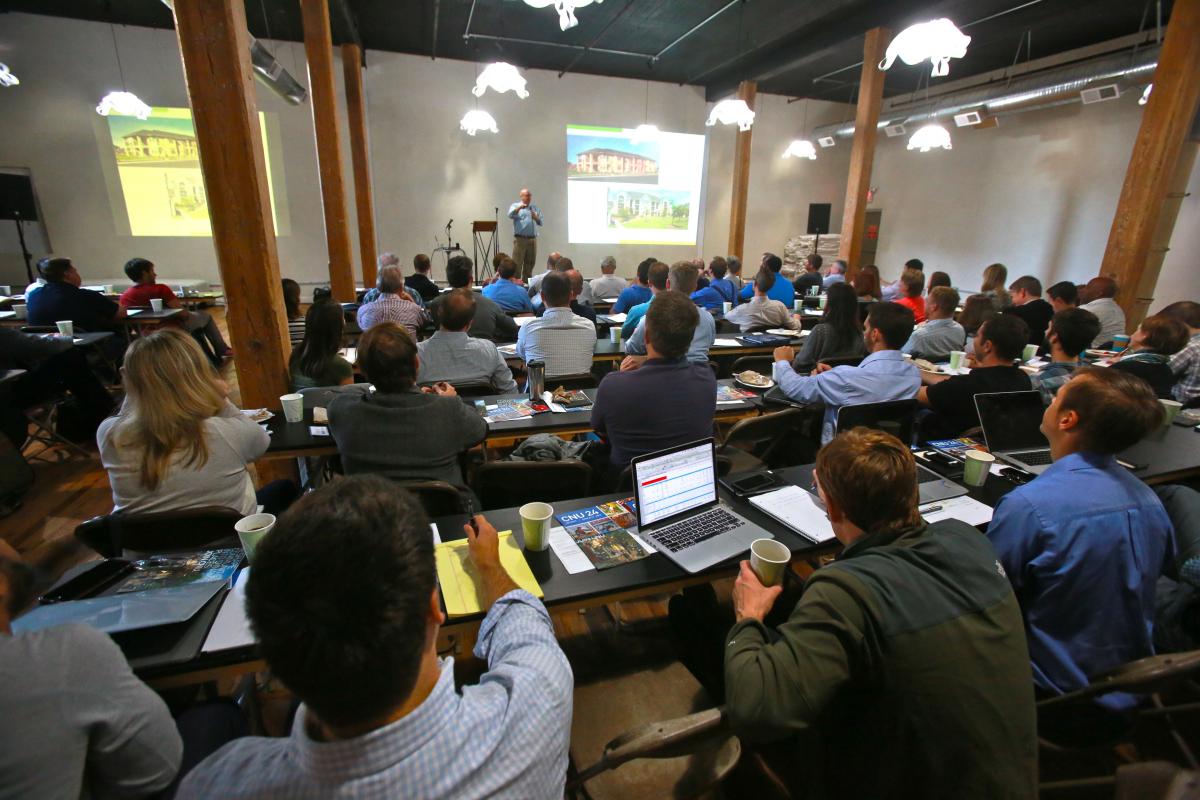
You two are working with an organization called the Incremental Development Alliance. What is that and what does it do?
Anderson: It does three things: training, cultivating, and connecting. We're training small developers. We're cultivating the ecosystem they can operate in, to help remove a few basic obstacles. And then we're connecting the people that are doing this sort of work so that they can help each other and pay it forward because the last thing one small developer wants another to do is repeat any of the learning curve. They will work really hard to make sure that they help you with the lessons they just learned. Some of those lessons are intensely local, so if the second or third small developer in a town shows up, the first is going to be all over them to make sure they don't screw up the same things he screwed up. Right now our activity is focused on regular, one-day workshops which feed into the two-day boot camp. The one-day workshops are a general introduction for anyone who wants to become a small developer. The two-day workshops are for folks that have committed and they have a project they're working, whether on paper or in reality. They bring their project and we have a better instructor-to-student ratio so we can spend time with them on the particulars, applying the lessons to their projects. Then through our group page, they can help each other, share resources, and ask questions. We're now two and a half years into this and there are several projects coming out of the ground. These early adopters are able to offer a lot of help to their colleagues.
Can you point to communities where a lot of this kind of development is taking place?
Anderson: There's a cluster in northwest Arkansas, in Bentonville, Springdale, and Fayetteville. There's a cluster in and around Dallas, pivoting off of the work of Monte Anderson and some other folks. There's a cluster in New England that's not so much a single community, but easily located within an hour’s drive of each other. And there's a cluster forming pretty quickly in Florida, mostly because a lot of new urbanists there decided they want to own their own buildings.
Kronberg: There’s also Atlanta, Chattanooga, and Savannah. These southern cities faced similar development cycles with great neighborhoods in disrepair and suburban hollowing out. A lot of these places have great neighborhood stock that needs a lot of TLC and we can pull from the same playbook. And there’s a demand for these sorts of neighborhoods, with folks who can’t afford the fancy parts of town returning to cities in droves.
You mentioned fourplexes, duplexes, and accessory dwelling units. Are there any other kinds of building types that offer really big opportunities in your view?
Anderson: Small workspaces within buildings. Mixed-use is typically not a freshman project. Eric's got a great blog post about the importance of live-work not as a policy idea but as a residential occupancy type. It's a little geeky, but there are lots of opportunities for single-story commercial space in small pieces, even as small as food carts and kiosks. How small an increment too small? Is a food cart too small? No, it works fine. A couple of food carts aggregated together actually do better than one on its own.
How does the historic rehabilitation fit into all of this?
Kronberg: It’s usually not a freshman project either, but it’s really important. To me, fixing up existing building stock is crucial for of the maintenance of character and place. Historic tax credits are also a very powerful tool, but they’re a varsity tool. You have to work up to that. So find a cool old building that pencils out without the tax credits and go do that. If along the way, you find a way to get a grant or get some tax credits that doesn't throw the project off, well, that's okay. But don't set yourself up for a complicated project that requires all of this extra brain damage, especially as your first historic project. You need to do a couple of these, without the tax credits, to graduate to that level. But then again, we talk about existing non-conformities and bending zoning codes and there's a lot of opportunity in old buildings to leverage.
Any final thoughts on this?
Anderson: If you are creating the amenity of walkable urbanism, why not own buildings that become more valuable as the amenity of walkable urbanism develops? If you're doing fee-for-service work as a planner, architect, or builder, and you're getting paid as long as there are buildings in progress, you are vulnerable for the next recession. You should own some damn buildings. You should be committed to a specific place. You should cultivate your town and neighborhood, and own pieces of it to create a passive income.
Kronberg: I'm passionate about fixing up existing neighborhoods. I see so much opportunity and need overlapping there, but not nearly enough bodies or people showing up with know-how. If we share know-how and put the tools in people's hands, I think the possibilities are limitless. But up next is the challenge of the suburbs. I appreciate all the work of suburban retrofit, but the near-term solution is to revitalize existing neighborhoods and places that have been blighted and put them back into productive service. I think the suburban retrofit stuff's going to take a while.
Anderson: The suburbs requires new tools, and we think we can cultivate those at a scale where they're flexible and applicable outside of existing neighborhoods.
Note: CNU intern Benjamin Crowther helped to produce this interview and article.





